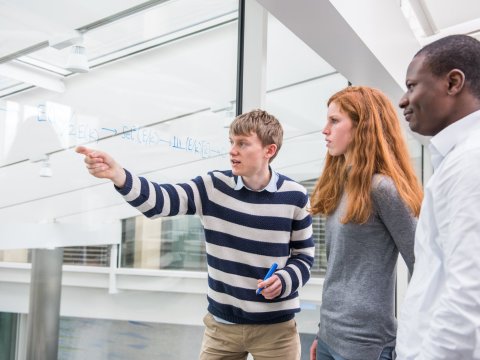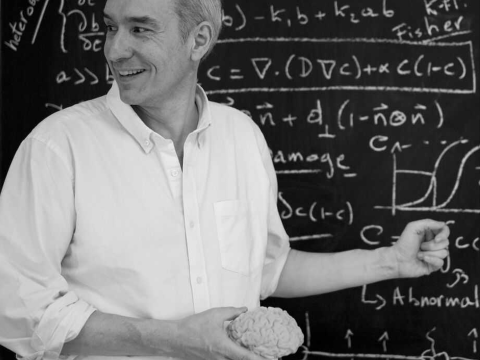Oxford Centre for Industrial and Applied Mathematics
Research

OCIAM is a world-leading research group in core applied mathematics.
We are the largest research group within the Mathematical Institute; between students, faculty, researchers, and visitors, the Centre has around 80 active members and many friends and collaborators around the world.
Because of the collaborative nature of our research, OCIAM cannot be divided into neat groups, nor do members fit into a single group. A division by application area can be found here.
Opportunities

Masters students are trained in industrial applications of mathematics via the MSc in Mathematical Modelling and Scientific Computing and the new MSc in Mathematical Sciences.
OCIAM takes 4-8 DPhil students a year onto our doctoral programme, which always attracts the best research students from across the world.
Here's some information about various Fellowships that are available to fund post-doctoral research.
Any postdoctoral positions we advertise on the University of Oxford vacancies page.
Faculty
- Prof. Alain Goriely FRS (Director)
- Prof. Andreas Münch (Deputy Director)
- Prof. Chris Breward
- Prof Maria Bruna
- Prof. S. Jon Chapman
- Prof. Mohit Dalwadi
- Prof. Paul J. Dellar
- Prof. Radek Erban
- Prof. Ian Griffiths
- Prof. Peter Grindrod CBE
- Prof. Heather Harrington
- Prof. Ian Hewitt
- Prof. Peter Howell
- Prof. Sam Howison
- Prof. Renaud Lambiotte
- Prof. Derek Moulton
- Prof. James Oliver
- Prof. Justin Sirignano
- Prof. Dominic Vella
- Prof. Sarah Waters
- Dr Nicola Kirkham (PA to Directors & Research Support for OCIAM)
Everyone else in OCIAM is listed here
Thinking about doctoral research in applied mathematics?...
OCIAM is now inviting applications from students interested in tackling mathematically rich problems with real-world impact. Our researchers work across theory, computation, modelling and data-driven approaches, with expertise ranging from fluid dynamics and industrial processes to biology, neuroscience, networks and machine learning.
Because a strong DPhil application is usually aligned with a specific supervisor or research group, we are highlighting examples of ongoing work within OCIAM. Prospective students are encouraged to contact our faculty to discuss potential supervision.
 prizes | media | podcasts | public lectures
prizes | media | podcasts | public lectures
| MEDIA: Folding under tension...don't we all!
Buckling and folding can be positive forces and are common in nature. Marc Suñé explains.
| PUBLIC LECTURE
The Geometry of Nature and the Shape of Things
Join Professor Alain Goriely at Gresham College for a new series of public lectures exploring how geometry shapes the natural world. Following his acclaimed talks on How the Brain Works — and How It Breaks, this next series turns to the mathematics of form, pattern, and beauty.
Through clear, captivating, and often humorous storytelling, Alain reveals the mathematical principles behind the shapes that define our universe — from the symmetry of living organisms to the spirals of seashells and the tiling of planetary surfaces.
These six lectures uncover how simple ideas such as symmetry, chirality, self-similarity, and tiling explain the complexity of nature — bridging abstract mathematics with biology, physics, and art.
Accessible, inspiring, and free to all, the series invites audiences to see the world through a mathematical eye and discover how geometry connects everything from microscopic molecules to celestial bodies.
Spotlight

Professor Alain Goriely is Director of OCIAM, and the Statutory Chair of Mathematical Modelling. In this lecture he asks, 'Can Mathematics understand the brain?'
Spotlight
Jon Chapman is Professor of Mathematics and Its Applications in the University of Oxford. In this lecture he explains 'Waves and resonance: from musical instruments to vacuum cleaners, via metamaterials and invisibility cloaks.'
Spotlight
The Mathematics of Poking, a short film exploring an aspect of the work of Professor Dominic Vella.








